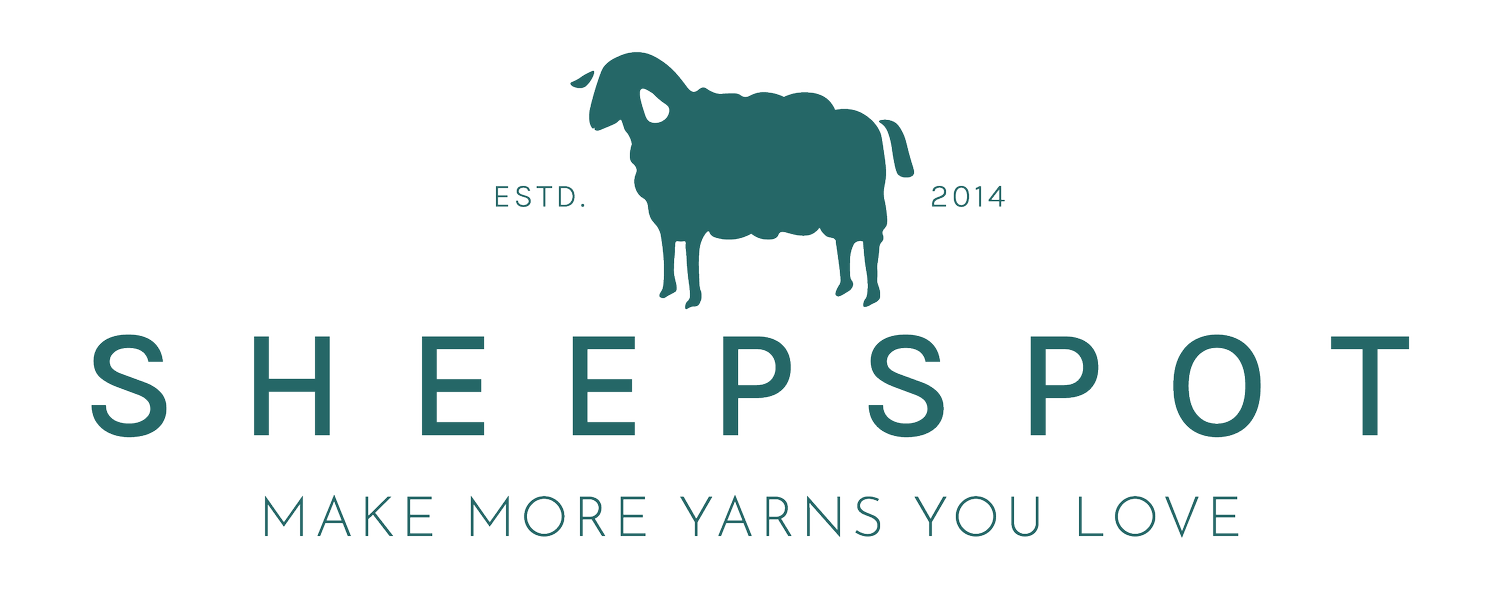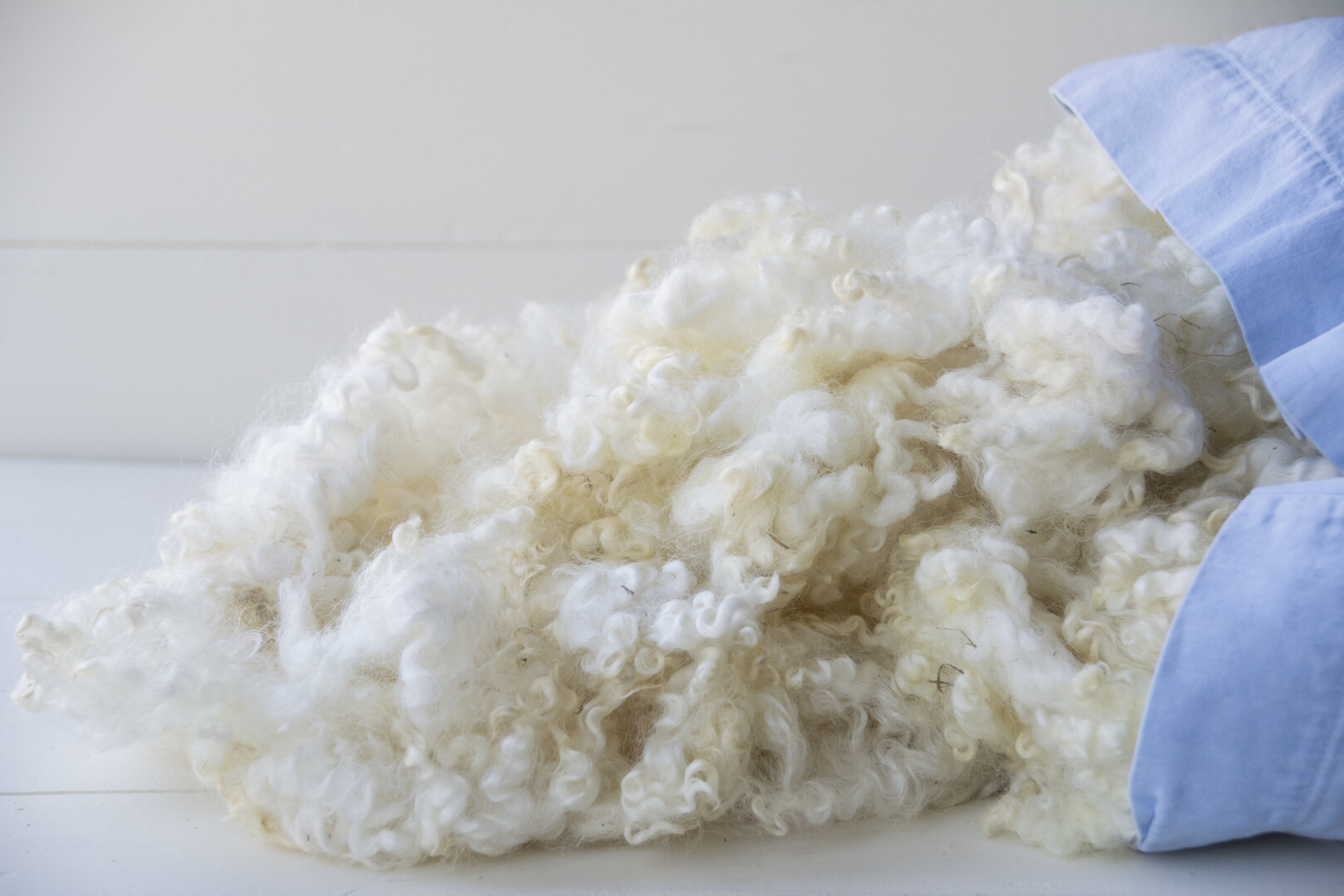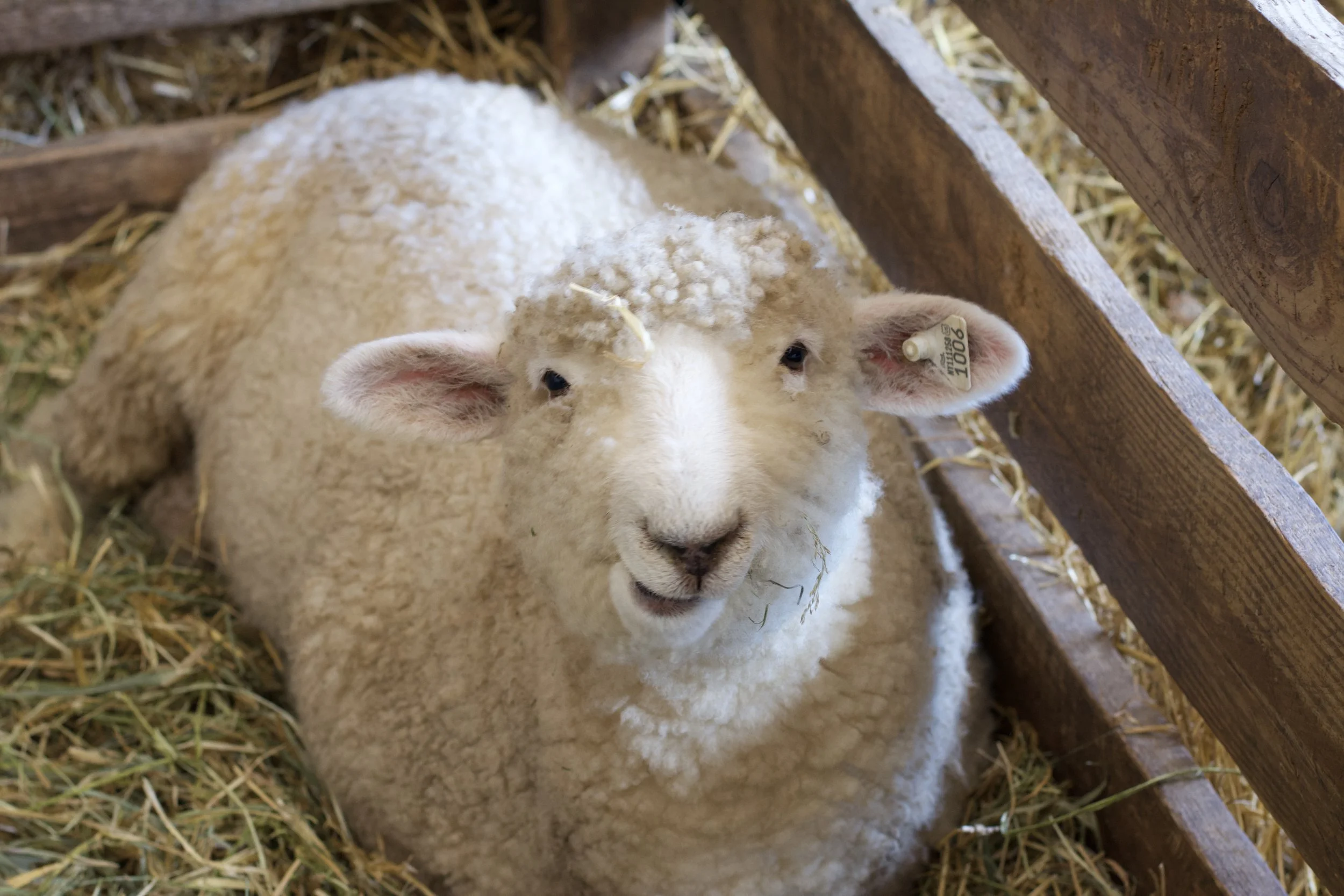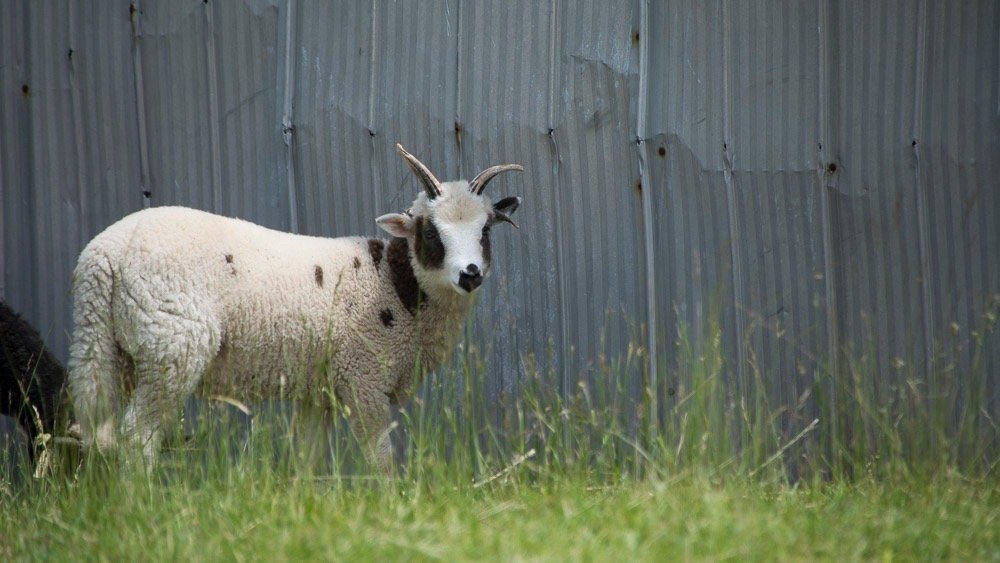
Become a Wool Whisperer
Don’t know your Polwarth from your Perendale? Breed School is a year-long deep dive into the wonders of wool that will take you from wool-curious to wool-confident! After Breed School, you’ll know how to choose the perfect wool for the yarn and fabric you want to create—every single time. What’s more, you’ll gain skills, knowledge, and experience that will make you a better spinner, no matter what you’re spinning.
As a passionate handspinner, you should be making yarn you love every time you sit at your wheel.
But you’re not there yet, and you know that you need—somehow—to deepen your understanding of the materials of spinning in order to create yarn more intentionally, choose the best wool for your projects, and become the agile and adept spinner you want to be.
But unlike spinners of old, who spun whatever wool they could get to clothe themselves and their families, we have literally dozens of breeds to choose from.
You encounter them at fiber festivals and have no idea why anyone would choose one over another. You hear members of your guild talking about them, and it’s about as intelligible as the “wah-wah-wha” sound Charlie Brown’s teacher made in the Peanuts cartoons.
Targhee! Teewater! Texel! Tunis! How does anyone remember which is which, let alone keep track of their characteristics and best uses?
If you’ve dipped your toe into the vast pool of breeds, your experiments may have yielded handspun cowls too scratchy to wear, socks that developed holes the third time you wore them, or sweaters that quickly became a mass of pills. Frustrating, to say the least.
Do any of these sound familiar?
you’re overwhelmed by the sheer number of breeds out there
you’re baffled by how other spinners tell all those breeds apart
you’re discouraged by projects that didn’t turn out the way you hoped because you chose the wrong wool
you feel stumped because you want to make a special yarn but don’t know which wool to choose
you’re unsure where to start to get a handle on all this information
I know exactly how all that feels. When I started spinning, I had a disastrous encounter with some beautiful hand-dyed Merino which I could not spin for the life of me.
I came very close to packing it in as a spinner—just a few days after I bought my first wheel—all because I didn’t know that wool comes in many forms, or that some wools are more beginner-friendly than others. I thought wool was wool.
Once I learned that different wools are, in fact, different from each other, and that not every wool is suitable for every purpose, I dove head-first into the study of wool, something spinners call “breed study.”
I learned about the different types of wool, and made a concerted effort to find, spin, and swatch as many different breeds of wool as I could. After lots (and lots) of scouring, prepping, spinning, plying, and knitting, I finally had enough hands-on experience that I could confidently choose the right wool for any project I envisioned.
That’s when everything about my yarn and my yarn-making experience changed. Not only had I developed a deep understanding of different wools, the project of breed study had made me a much better spinner, by giving my brain and hands an abundance of different experiences to savor and problems to solve.
In short, breed study made me the spinner I am today, by giving me clarity about the nature of wool, helping me appreciate its rich variety, and teaching me which wool to use when.
My own ongoing breed study, along with more than a decade dyeing and selling wool, advocating for rare and endangered sheep breeds, and teaching spinning, have allowed me to develop clear and simple frameworks to help students harvest the abundant gifts breed study can give quickly and easily.
I start by teaching you about wool types. By breaking wool into a few distinct categories, I give you a straightforward conceptual rubric into which you can slot breeds as you learn about them.
Next, I take care to define the components of breed study, because there’s much more to breed study than how many breeds you’ve spun. Breed study also entails:
developing the manual skills required to adapt quickly to new wools
knowing how to sample a new-to-you wool and make informed decisions about the best way to spin it.
having enough experience to choose the right wool for the job
understanding that the kinds of wool spinners love to work with don’t necessarily come from the breeds best suited for commercial agriculture, supporting the breeds agri-business leaves behind, and understanding the importance of genetic diversity among sheep
Finally, I’ve created a detailed description of the journey spinners typically take through breed study, one that breaks the process down into four distinct phases and allows you to chart your progress and celebrate your successes along the way.
I’ve combined these rubrics with breed-specific guidance, community support, and lots of hands-on practice in a twelve-month experience called Breed School.
So what is Breed School, and how will it transform your spinning practice?
Here’s how you can expect to benefit from Breed School:
Better spinning: by giving you broad experience with different types of wools, Breed School will improve your spinning skills by constantly giving your hands and your brain new problems to solve together. The result: you’ll be a more dextrous yarn-maker and you’ll make more yarns you love, more consistently.
More confidence with new fibers: Breed School will help you develop a quick and easy sampling routine that will allow you to get up to speed with any fiber—wool or not—fast. The result: whole new spinning worlds will open up for you.
More versatility: Breed School will teach you to adjust your technique on the fly to respond to the fiber you’re actually spinning in that moment. The result: you’ll be more adept whatever fiber your spinning, and particularly when spinning blends.
More clarity: through hands-on exposure to a range of wools, you’ll quicky get clear about wool types and specific breeds, and have a ready frame of reference as you continue to encounter and experiment with new wools. The result: you’ll be better able to keep track of what materials are available to you, and remembering which breed is which will become much easier.
Better yarns and projects: The invaluable practical know-how you’ll get in Breed School will help you become a wool-choosing ninja. You’ll know exactly what wool to pick for the yarn and cloth you want to create, because you’ll be able to anticipate how a particular wool will behave when spun and made into cloth.The result: no more projects that disappoint because you choose the wrong materials.
More joy: you’ll feel more connected to shepherds, sheep, and nature in your spinning practice, you’ll enjoy spinning more, and you’ll get even more pleasure from your handspun yarns and projects. The result: nothing less than a happier, more relaxed you.
But you don’t have to take my word for it. Check out these comments from past students’ exit surveys:
How does Breed School make undertaking a breed study easy and guarantee your success?
Here’s what’s included:
Breed School is a BYOF (“Bring Your Own Fiber”) experience, so we provide you with a carefully-selected and sequenced list of the twelve breeds we’ll be studying, as well as specific advice on where to source high-quality combed top from each breed (we’ve even secured some discounts for you from recommended suppliers!). ($100 USD value)
12 video lessons in which I demonstrate and talk through sampling the month’s breed several different ways, show you my samples, and tell you which spinning methods and samples I preferred—and why. ($360 USD value)
an information sheet about each breed, with its history, characteristics, sources for further information, and spinning tips ($120 USD value)
12 additional bonus lessons on topics related to breed study ($360 USD value)
Access to a private Breed School community where you can ask questions and celebrate your wins ($240 USD value)
Monthly meet-ups with Breed School teaching assistant Bridget Flynn ($240 USD value)
Invitation to and preferred pricing for The Guild, my membership for intermediate and advanced spinners ($50 USD value)
That’s a total value of $1470 USD
But you can enroll in Breed School for just $480.
Think about what it would cost you, in money and time, to put together your own breed study.
With time, patience, and money, you could absolutely figure this whole breed study thing out yourself. After all, that’s what I did.
Here’s exactly how I did it:
I researched wool types and identified the breeds I wanted to try in each type
I learned everything I could about rare and endangered sheep breeds
I spent hours online sourcing samples (and sometimes entire fleeces) of the breeds I was interested in
I actually purchased wool from each breed
Since much of what I was working with was raw fleece, I painstakingly scoured each breed
I prepared each breed’s wool
I spun the wool
I knit sample swatches with each breed
In short, it was a lot (especially the scouring and fiber prep, which is why we use commercially-prepared fiber in Breed School)!
Granted, I was obsessed—and determined. So I didn’t mind spending much of my free time and most of my discretionary income on my newfound passion for breed study. (And, as a professional academic researcher, learning new things was right in my wheelhouse.)
Most of the time I loved it.
But if I’m honest, there were also lots of times I felt uncertain and alone.
Many of the samples I was working with weren’t high quality, so I had to put a lot of time and effort into washing and preparing them. I had to work out my own systems for sampling and record-keeping. And I didn’t have anyone to share ideas or experiences with.
Going it alone for me required major investments of both time and money. It was a long, complex process with lots of loose ends (and bits of wool) to keep track of. It took up a lot of bandwidth.
Here’s one thing I know for sure: if someone had offered me a comprehensive course on breed study for just over $1 a day, I would have jumped at it.
Breed School opens only once a year, in June. When we open the doors again in June 2026, the price will very likely be higher. So it’s time to make a decision.
Will you take the first step to mastering your materials, building your yarn-making skills, spinning more intentionally, and making more yarns you love?
Breed School includes:
Breed School is a BYOF (“Bring Your Own Fiber”) experience, so we provide you with a carefully-selected and sequenced list of the twelve breeds we’ll be studying, as well as specific advice on where to source high-quality combed top from each breed (we’ve even secured some discounts for you from recommended suppliers!). ($100 USD value)
a video lesson in which I demonstrate and talk through sampling the month’s breed several different ways, show you my samples, and tell you which spinning methods and samples I preferred—and why. ($360 USD value)
an information sheet about each breed, with its history, characteristics, sources for further information, and spinning tips ($120 USD value)
12 additional bonus lessons on topics related to breed study ($360 USD value)
Access to a private Breed School community where you can ask questions and celebrate your wins ($240 USD value)
Monthly meet-ups with Breed School teaching assistant Bridget Flynn ($240 USD value)
Invitation to and preferred pricing for The Guild, my membership for intermediate and advanced spinners ($50 USD value)
That’s a total value of $1470 USD. But there’s an important bonus I haven’t told you about:
The Breed School Workbook: this downloadable PDF solves the problem of keeping a record of your breed study. It includes a complete materials list and project plan, all of the breed information sheets and other course handouts, as well as room for your notes on the sampling and bonus lessons, and a space to plan projects to make with your yarns ($70 USD value)
The workbook brings the total value of Breed School to $1540.
Pay in Full (and save 15%)
$480
Pay in Installments
12 payments of $46

Try Breed School Risk-Free
Spin School comes with a risk-free 14-day guarantee.
You will receive module 1 on July 1, so you’ll have two weeks to watch the first month’s lessons and do the exercises. If you decide the course isn’t for you, let us know by July 14. Show us you’ve put in the work, and we’ll refund your investment.
You can find full details of the refund policy here.
FREQUENTLY ASKED QUESTIONS
-
We have partnered with The Woolery in the US and World of Wool in the UK to provide kits for Breed School.
The kit from The Woolery will include 250 grams of combed top from each breed and will cost $184.44 USD. Free shipping in the US is included.
The kit from World of Wool will include 100 grams of combed top from each breed and will cost £24. 72 (including the UK’s VAT for UK residents) or about $34 USD, plus shipping. The price exclusive of VAT is £20.60, or about $28 USD, plus shipping. You can find details of World of Wool’s shipping costs here.
Please note that The Woolery and World of Wool are completely independent of Sheepspot and we bear no responsibility for their prices, shipping costs, or customer service policies (though I have ordered from both for years and have always received excellent service). Questions about fulfillment of fiber orders should be directed to the company in question.
-
Since closing our dye studio in 2024 we no longer have the capacity to fullfill and ship fiber orders.
-
You’ll need a spinning wheel in good working order, three bobbins, a lazy kate, and a niddy noddy.
-
No. The lessons for the month are released on the first day of each month, so you’ll be able to focus on just one thing at a time, and you’ll have plenty of implementation time to spin each month’s wool.
-
Great question. The lessons will take under an hour to watch. Once you’ve watched the lessons, you may choose to just spin samples or to spin all the wool you have for that month. We recommend the latter!
-
If you are able to spin a continuous thread, yes! Lots of newer spinners have completed Breed School successfully and have seen their skills, knowledge, and confidence increase exponentially through the process. Take the plunge!
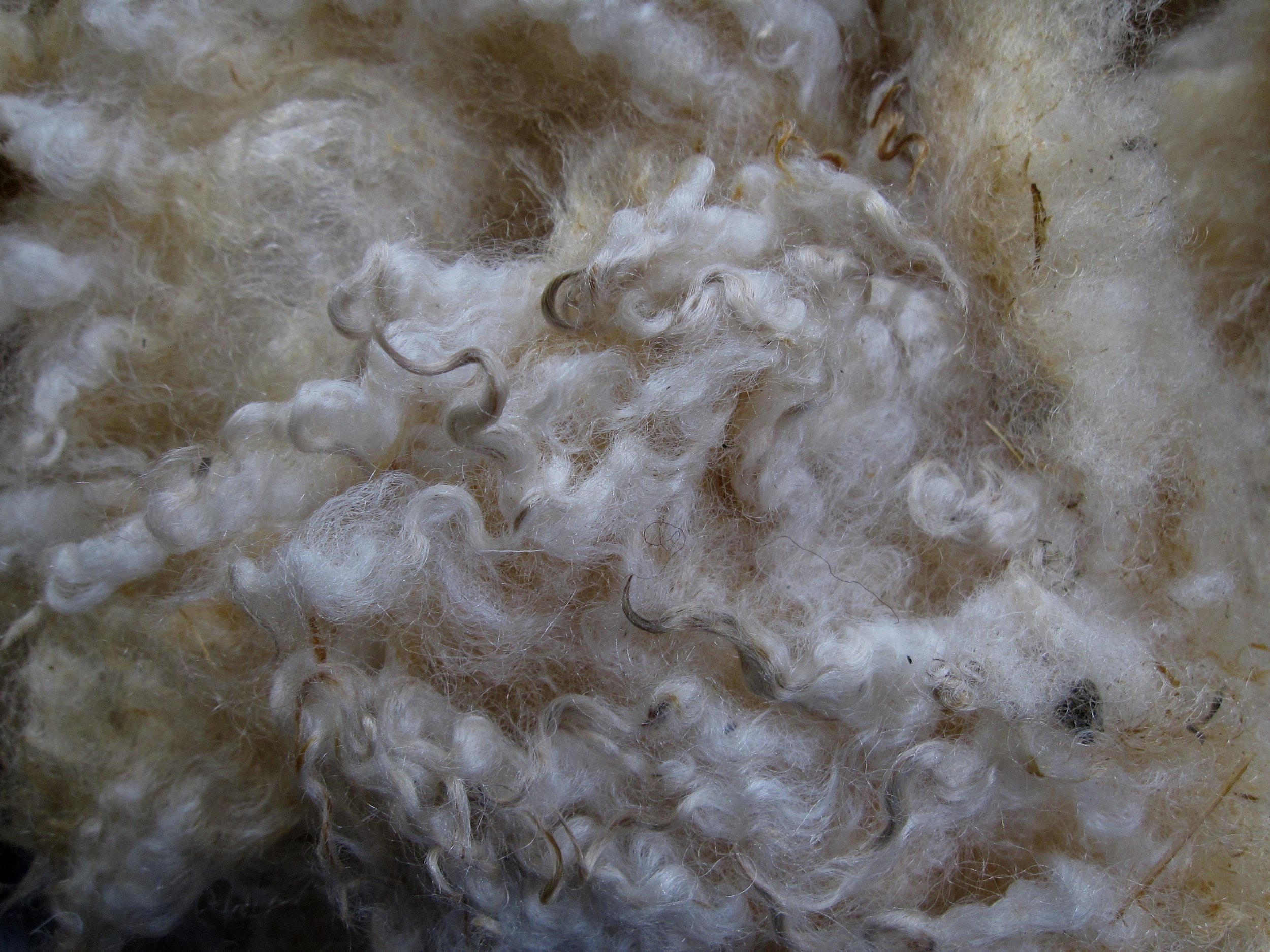
Breed study changed my life. Really.
In 2010 I took a class with Deb Robson, co-author of The Fleece and Fiber Sourcebook. That class introduced me to a range of different wool types and sheep breeds. It also, crucially, taught me that some of the breeds whose wool I loved the most were rare or, in some cases, critically endangered.
Deb’s class introduced me to breed study and gave me a mission: to help as many fiber artists as possible learn about the wonderful diversity of wool and to invite them into the fight to preserve genetic diversity in sheep and create wider markets for rare wools.
I came home from the class and immediately started my own breed study. By deepening my understanding of my materials, breed study made me a much more skillful, knowledgeable, and confident spinner. Eventually, it led to my decision to start Sheepspot in 2014.
Breed study has connected me to the world of sheep and shepherds, helped me become more intentional as a yarnmaker, and, through Sheepspot, connected me to a worldwide community of spinners who enrich my life every single day.
What can breed study do for you?
Join me in Breed School to find out.
About Sasha Torres
Sasha Torres, a recognized expert in hand spinning, boasts a PhD from Cornell University and almost four decades of teaching adult learners as a tenured Associate Professor at the University of Western Ontario and as a former faculty member at esteemed institutions such as Harvard, Brown, Dartmouth, and Johns Hopkins. Founder of Sheepspot, she has spent over a decade in the fiber arts business, excelling as both a spinning teacher and fiber dyer.
In addition to her scholarly contributions, which include a book, an anthology of scholarly articles, and numerous articles in academic journals, Sasha's impact extends to broader audiences through articles in Ply Magazine and features in Spin-Off.
Additionally, she has created and hosted two spinning podcasts, The SpinDoctor Podcast and The Sheepspot Podcast, which together have amassed over 200K downloads.
Sasha's innovative approach to spinning education is encapsulated in The Spinner's Journey™ and Pillars of Skillful Spinning™ frameworks, a comprehensive curriculum guiding students from confusion and frustration to the joy of consistently creating yarns they love. Her proprietary methodology ensures spinners of all levels find satisfaction in crafting yarn they genuinely adore.
